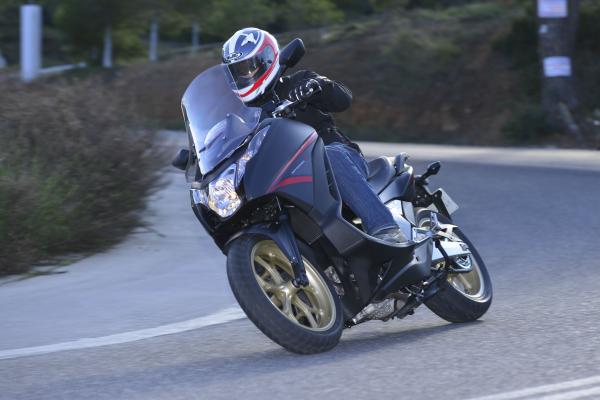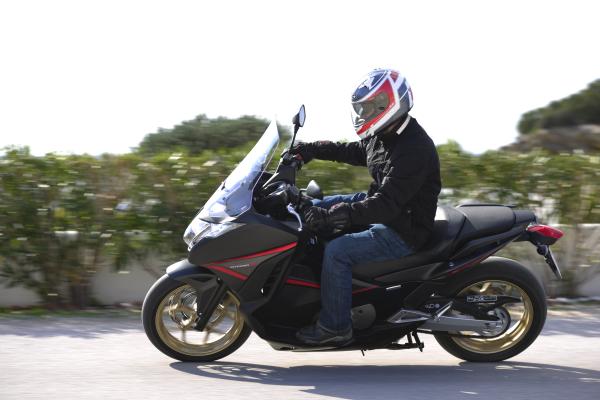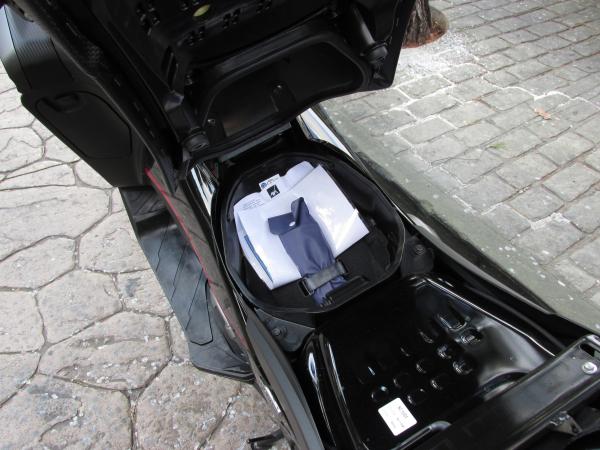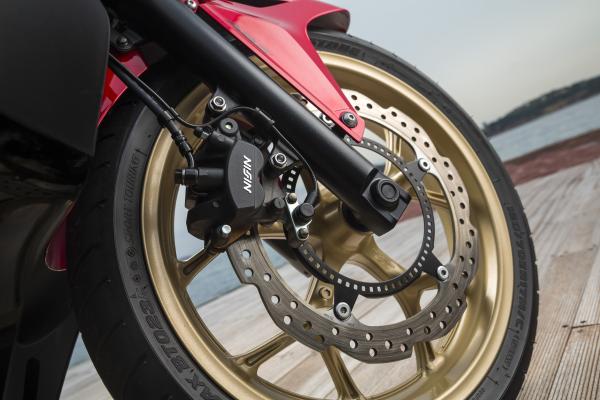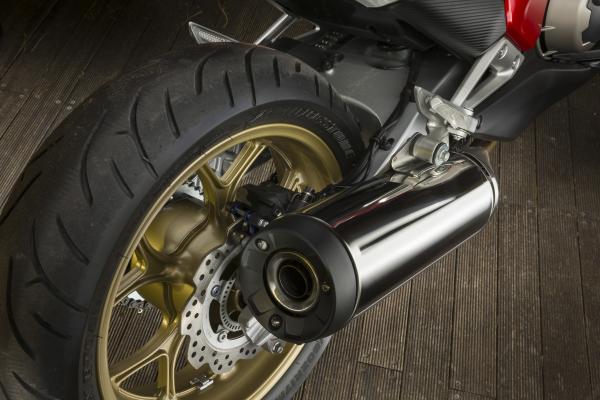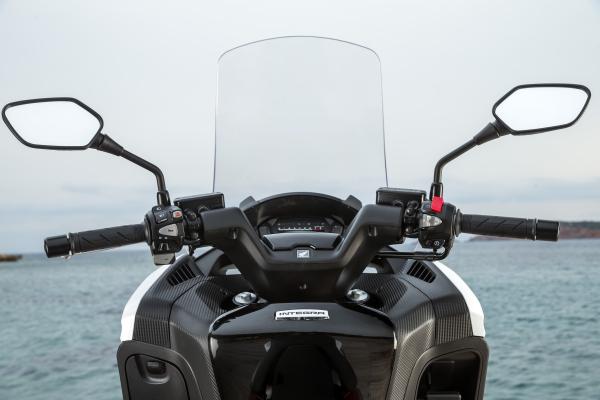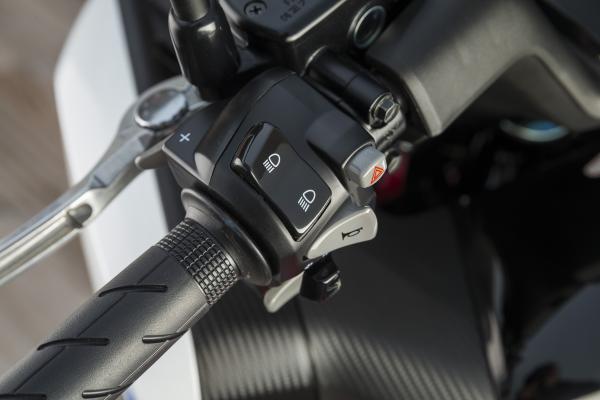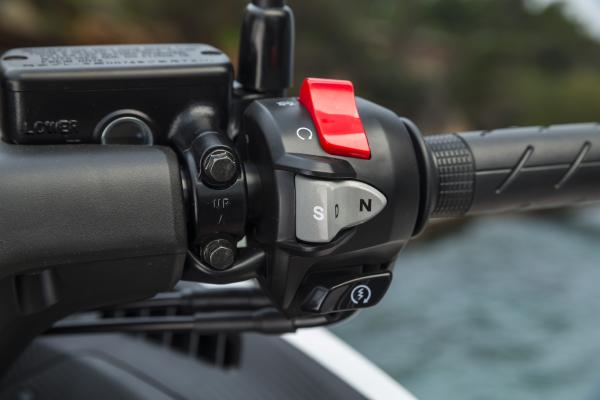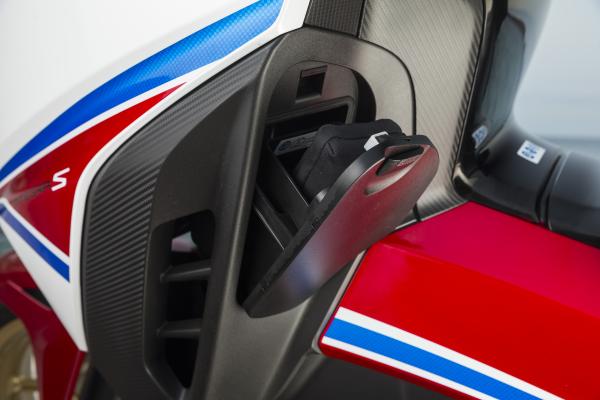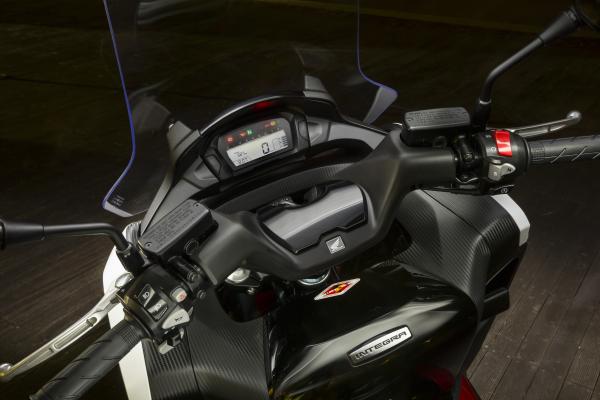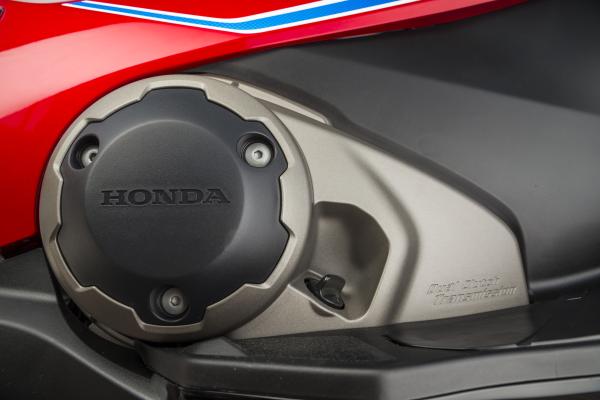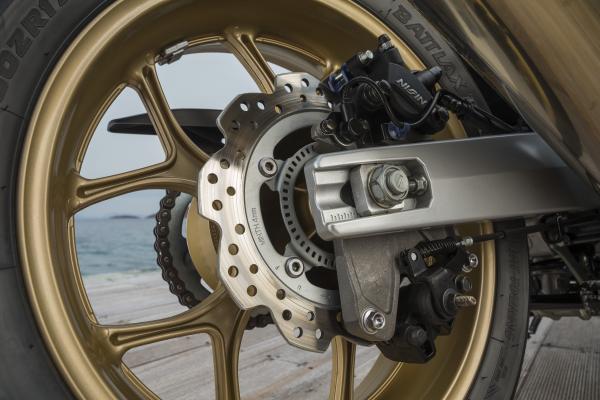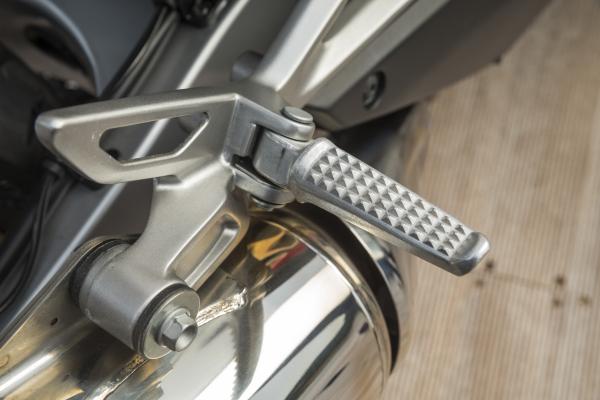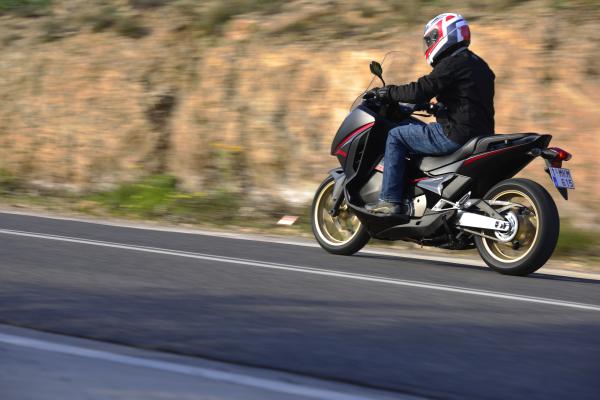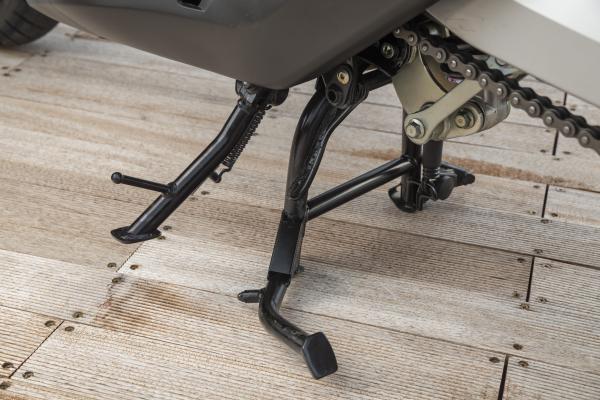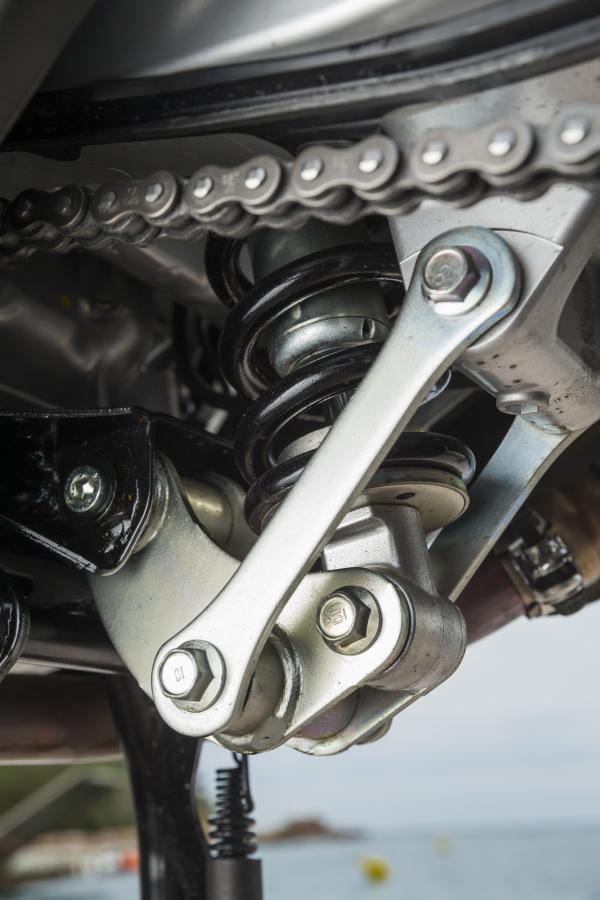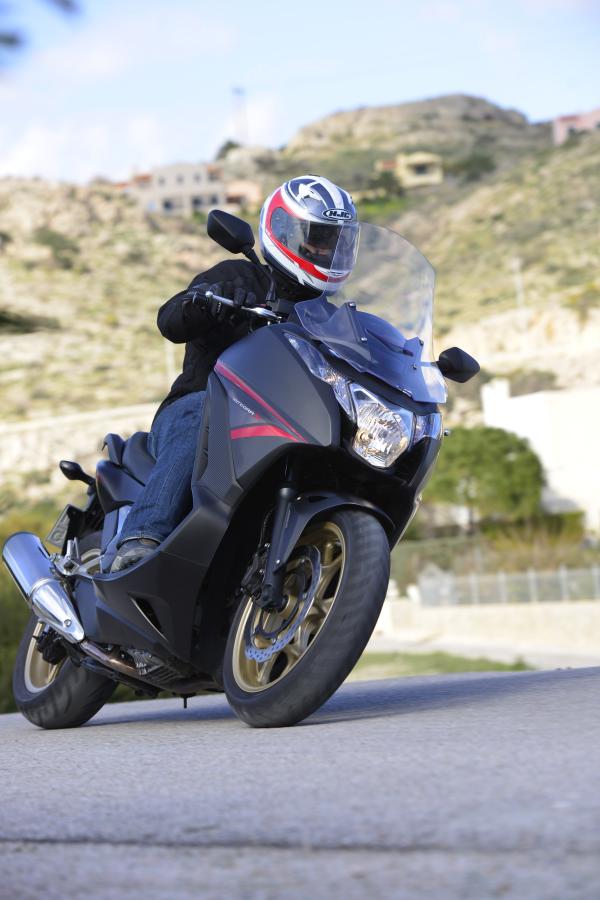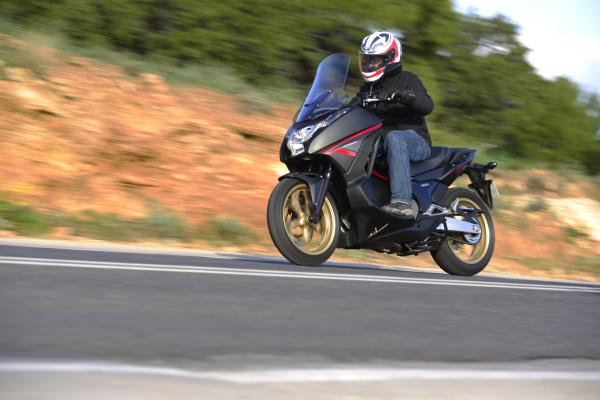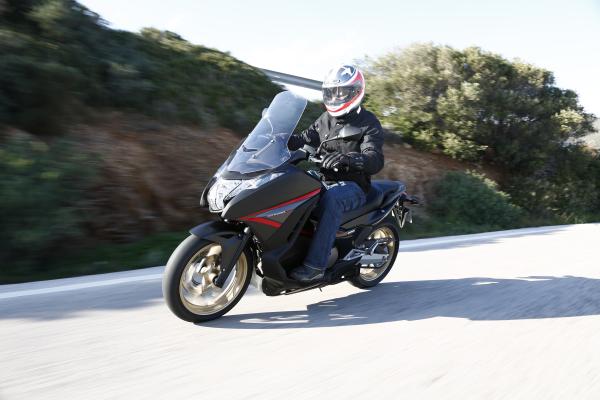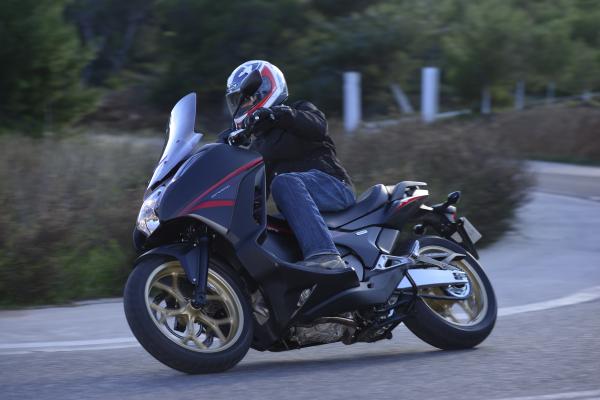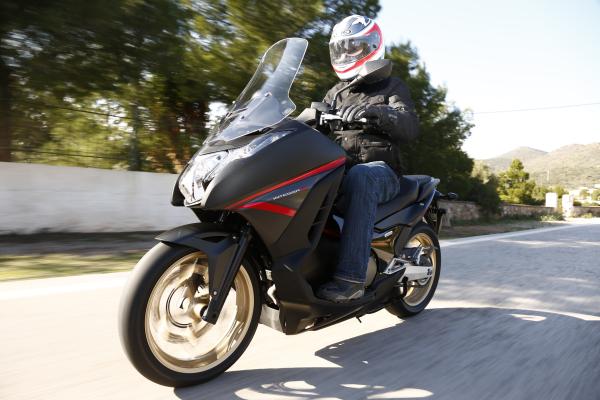First ride: 2014 Honda Integra 750 review
The maxi scooter that's really a motorcycle

Member for
54 years 8 monthsDESPITE its conservative image, Honda's Integra is actually quite radical.
It's not even clear what it is. Honda calls it a scooter so from now on I will too. Even though it's got a motorcycle frame and engine and 17-inch motorcycle wheels.
It shares its engine and rolling chassis – or 'platform' - with Honda's NC range of motorcycles, consisting of a naked bike and an adventure model.
As a result, the Integra is not a step-thru. There's a shallow well in front of the seat but it's a token, not deep enough to swing a leg through, there instead to show you how much the Integra is not a motorcycle.
Instead you have to swing a leg over the pillion seat to get on, just as with any other motorcycle. I mean any motorcycle.
Like its motorcycle siblings, it has its petrol tank under the seat. Whereas they have a helmet-sized luggage compartment where the tank would normally be, the Integra only has that token well. And while scooters usually have a commodious under-seat compartment, the Integra, because of its big wheels, has one only about the size of a fruit bowl.
But look at it this way: it's a maxi scooter, offering the hospitality that entails - dry feet and legs, tall screen, chair-like ergonomics - but with the handling of a motorcycle.
The old version of the Integra was not as fast as some other maxi scooters outright. It made less power than most and hit a rev limiter at about 94mph. But it murdered the rest of the pack around a tight, twisty circuit.
For 2014 it's been increased in capacity from 670 to 745cc, and power has risen from 51 to 54hp. And it's gained an aluminium swing-arm, where the rest of the NC family has steel. So watch out.
Having called it conservative, it also gets much-needed styling tweaks, with bodywork changes and new colour schemes, including a 'special edition' matt black with red stripes. There's a white and red Fireblade SP-style scheme but Honda has unfathomably decided that's not for the UK. How can manufacturers expect the UK maxi scooter market to grow if they withhold the best ones for fear of not selling them?
Also like a motorcycle, the Integra has a real gearbox, where other big scooters use Continuously Variable Transmission. CVT has a belt spinning between two pairs of cones to effectively create an infinite number of gear ratios. As each pair of cones move together or apart, it creates the effect of front and rear sprockets instantly changing size. But it can be heavy, has power limitations and, because the ratios are constantly changing, does not lend itself to a direct throttle response.
Honda employs an entirely different and arguably better twist-and-go system, called Dual Clutch Transmission. It uses six conventional gears, with all the direct throttle feel that entails, in an automatic box with two clutches. One clutch is responsible for odd gears, the other even. As one disengages first, the engages second, and so on. The system is a £600 option on the NC motorcycles whereas on the Integra you have to have it.
It makes for really smooth shifts but, perhaps more interestingly in the case of the Integra, the six distinguishable gears create a sense of motorbike-like mechanical drama that other scooters lack. The revs climb, there's a smooth change, almost without power interruption, they fall as it finds the next gear and then climb again. With CVT they just climb and stay high.
There are two automatic modes, 'Drive' and 'Sport', as well as a semi-auto option, in which you shift up and down using two buttons on the left bar, for thumb and forefinger. There's no clutch and no need to close the throttle.
If you're used to a conventional transmission, as I am, you may miss the mechanical connection of a foot shifter to the gearbox. It's an analogue experience, compared to the digital one of pressing the buttons, which creates a sense of remoteness. The engine doesn't help. It's based on a car's. The starting point for the design was half a Honda Jazz engine.
It shows. The power delivery is like a car's, and not a particularly exciting one. There's a lot of torque low down, a bit more as the revs climb, and before you know where you are it's bumping into the red line, at just 6,500rpm. Coupled with those button shifters, the effect is confusion about when to change gear. It's not intuitive enough.
There's another problem. The Integra has a handlebar rear brake lever, unlike the NC motorcycles which have a pedal. So as well as changing gear, and indicating, your left hand is expected brake. At the press launch in Athens, trying to do all three at once on the approach to a junction seemed just too much.
If it wasn't just too difficult, it would still be too much effort, given you can switch to an automatic mode by pressing a single button with your less busy right hand. Not Drive mode though. It's too frugal, defaulting to a gear or two higher than feels natural. When you try to accelerate, there's nothing there until it changes down.
Switch to Sport and the Integra changes complexion, and becomes something much more engaging. Now it makes more natural selections, giving you instant roll-on power. Because the engine has such a broad spread of torque - and more torque across the range for 2014 - it can accelerate hard from quite low down.
Sometimes you have to wait for it to change down, but never long, and if that's annoying you can temporarily override it by shifting up or down with the buttons on the left bar.
This is how it works best, letting DCT take most of the decisions but occasionally having the final say yourself. And it does work. Pushed, the engine gives near all it has, all the time. The gear shifts and throttle response lend it a sense of anger most maxi scooters cannot muster.
Then there's the handling. It doesn't wobble in fast bends like the Burgman. It's not as vague as a boat, like the SRV850. It handles like a motorbike. Because secretly it is one.
That's the point of the Integra.
It feels stable at all times, helped by those big wheels. The suspension doesn't wallow under maxi scooter-like bulk. At 237kg, the Integra is 37kg lighter than a Burgman 650.
It stops well. You'd never guess from its power that there is only a single disc up front. ABS is standard.
It's wrong to say it feels exactly like a motorcycle. The difference was highlighted by Honda launching the Integra alongside the NC750X, essentially the same machine in the shape of an adventure bike, and having journalists ride them back-to-back. The biggest difference has nothing to do with how much bike is between your knees. It's in the position of your feet, which are in front of you on the Integra and directly below your body on the NC. The latter makes it easier to feel and influence the motorcycle through the pegs.
The benefit of the Integra is space to stretch your legs out straight. I'm 5'9" and couldn't do this on the old Integra. Now leg room has been increased and I can, just about.
Still, the Integra is nearer to motorcycle than every other maxi scooter I've ridden, which is most of them. It doesn't have the low-centre of gravity of a scooter, making it feel more like a motorcycle at low speed.
CVT can give a jerky on/off throttle response at walking pace but the latest DCT eases in the power with precision smoothness, making U-turns easier.
Not only does it offer more motorcycle-like performance than other maxi scooters, it does it for less. Most maxi scooters cost around nine grand. The Integra is under eight.
But it's biggest problem remains that small under-seat compartment. Convenient luggage space is a key attraction of maxi-scooters, some of which have over 50 litres. And some of which are great fun to ride, especially the BMW C600 Sport and Yamaha Tmax.
The Integra also has a comparatively small glovebox, with space for a phone and wallet at most. And then there's the matter of its having a chain and sprockets, where other scooters use low-maintenance enclosed final drives.
The NC750DX costs £800 less, even with DCT, and offers more luggage space, along with good comfort and reasonable weather protection. If you want scooter-like convenience in a motorcycle-like package, why wouldn't you buy that instead?
Model tested: Honda NC750X DCT
Price: £7,799
Power: 54hp
Kerb weight: 237kg
Torque: 50lbft
Fuel economy (claimed): 81.6mpg
Seat height: 790mm
Colours: White, silver, red, special edition metallic black
Availability: Now

